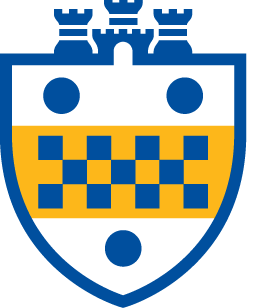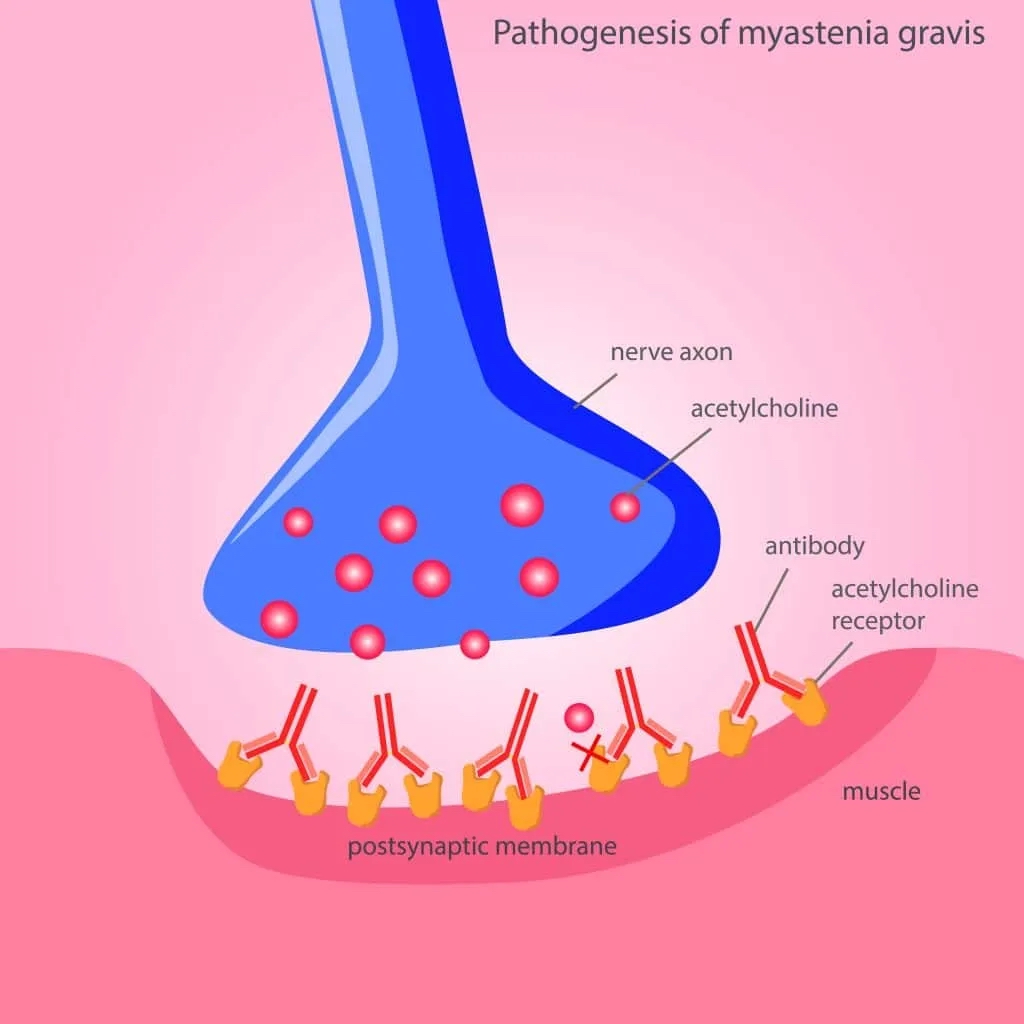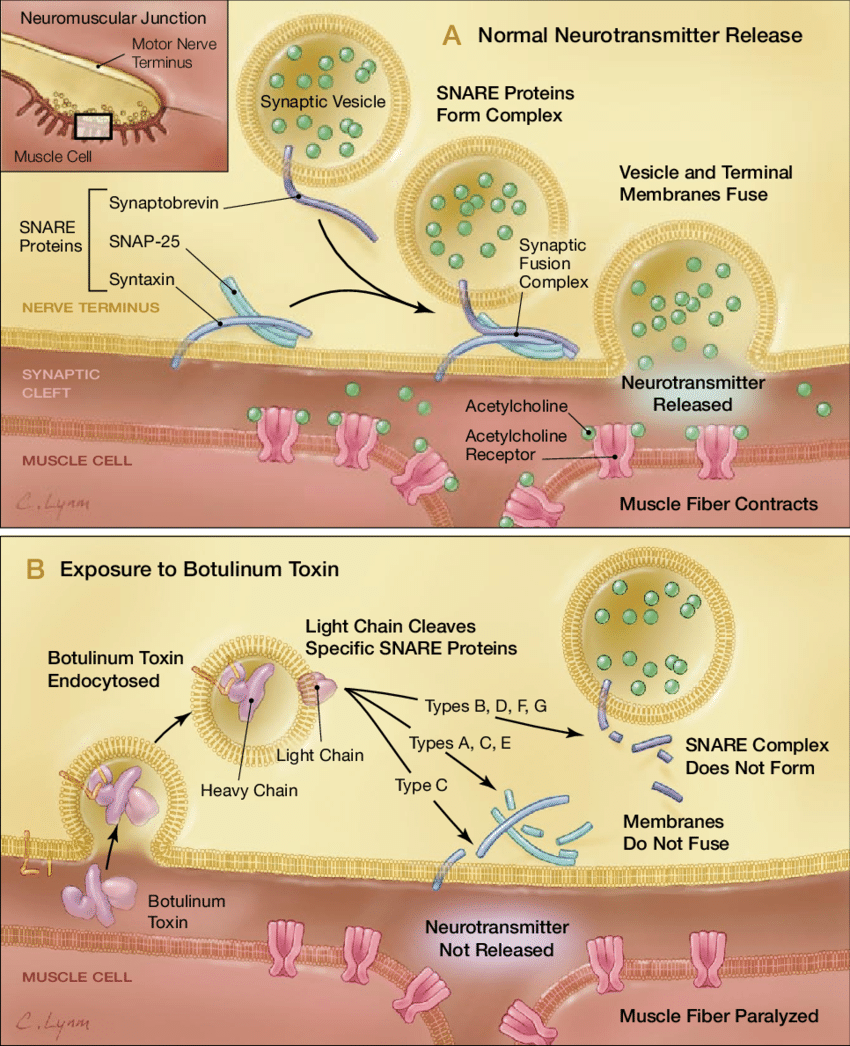Introduction
The neuromuscular junction is a specialized peripheral cholinergic synapse that provides communication between a motoneuron and a skeletal muscle fiber. Due to its unique structural and functional properties, this synapse is particularly susceptible to a range of pathological conditions, which are outlined in the sections below. Additionally, synaptic transmission at the neuromuscular junction can be influenced by a range of pharmacological agents that exert paralytic effects.
Paralytic Drugs: Nondepolarizing and Depolarizing Muscle Relaxants
Paralytic drugs, also known as muscle relaxants, are commonly used in clinical settings to induce muscle relaxation during surgical procedures and facilitate intubation. These drugs are divided into two major classes: nondepolarizing agents and depolarizing agents. Nondepolarizing Paralytic DrugsNondepolarizing agents work by competitively inhibiting the binding of acetylcholine (ACh) to nicotinic receptors at the neuromuscular junction. By blocking ACh from binding, these agents prevent the depolarization of the muscle cell membrane, thereby inhibiting muscle contraction. Commonly used nondepolarizing agents include: These drugs generally have a longer duration of action compared to depolarizing agents and are often used for procedures that require extended muscle relaxation. The effects of nondepolarizing agents can be reversed using acetylcholinesterase inhibitors, such as neostigmine or edrophonium. These inhibitors increase the concentration of ACh at the neuromuscular junction, allowing it to outcompete the nondepolarizing agents and restore muscle function. |
Depolarizing Paralytic Drugs
In contrast, depolarizing paralytic drugs such as succinylcholine act as agonists for nicotinic receptors. They initially bind to these receptors, causing an initial depolarization and muscle contraction. However, continued exposure leads to desensitization of the receptors and a sustained depolarized state.
Drugs such as succinylcholine act in two phases:
- Phase 1 (Depolarization): Succinylcholine binds to nicotinic receptors, causing them to open and allow sodium ions to enter the muscle cell. This results in an initial muscle contraction.
- Phase 2 (Desensitization): The postsynaptic membrane does not fully repolarize because the nicotinic receptor remains open, leading to a prolonged influx of sodium ions. As a result, the inactivation gates of voltage-gated sodium channels remain closed, preventing further action potentials and leading to muscle paralysis.
Succinylcholine has a rapid onset and a short half-life, resulting in a brief duration of action. This makes it ideal for procedures that require quick muscle relaxation, such as rapid sequence intubation. However, unlike nondepolarizing agents, the effects of depolarizing agents are not easily reversed, and their use can be associated with certain complications, such as hyperkalemia (due to continued potassium efflux from muscle fibers) or malignant hyperthermia in susceptible individuals.
Acetylcholinesterase Inhibitors
Acetylcholinesterase inhibitors lead to an accumulation of acetylcholine at synapses, which can result in effects similar to those of depolarizing paralytics, as the excess acetylcholine continuously activates nicotinic receptors at the neuromuscular junction.
In addition to causing muscle paralysis at the neuromuscular junction, acetylcholinesterase inhibitors lead to an accumulation of acetylcholine at muscarinic synapses, which overstimulates the parasympathetic nervous system. This overstimulation can result in symptoms such as bradycardia, bronchoconstriction, excessive salivation, and gastrointestinal disturbances.
Some pesticides commonly used in agriculture, such as organophosphates and carbamates, function as acetylcholinesterase inhibitors. These compounds can cause muscle paralysis and excessive stimulation of muscarinic receptors, leading to toxic effects in both humans and animals.
Highly toxic organophosphate nerve agents such as Sarin have been weaponized for military purposes. Sarin is considered a weapon of mass destruction and its production and stockpiling are banned under the Chemical Weapons Convention due to its potency and potential for mass casualties.
Clinical Management of Acetylcholinesterase Inhibitor Toxicity
Patients experiencing toxicity from acetylcholinesterase inhibitors can be treated with:
- Atropine, which competes with acetylcholine for muscarinic receptors, reducing the effects of excess acetylcholine on the parasympathetic nervous system.
- Pralidoxime (2-PAM), which reactivates acetylcholinesterase by cleaving the bond between the enzyme and the organophosphate, restoring normal enzyme function.
Common Neuromuscular Diseases
Myasthenia Gravis
The hallmark of MG is fluctuating muscle weakness that worsens with activity and improves with rest. This is due to the decreased number of functional ACh receptors and the depletion of acetylcholine in the presynaptic cleft over time.
- Ocular Symptoms: Extraocular muscle weakness often manifests as ptosis and diplopia, as ocular muscles are in constant use and have a lower density of ACh receptors.
- Brainstem Symptoms: Patients may experience difficulty chewing, dysphagia, and dysarthria due to the involvement of bulbar muscles.
- Limb Weakness: Proximal limb weakness is common, affecting the muscles of the shoulders and hips, and may present as difficulty in performing tasks such as climbing stairs or lifting objects.
- Generalized Weakness: In severe cases, generalized muscle weakness can affect respiratory muscles, leading to respiratory insufficiency and crisis.
Symptoms of Myasthenia Gravis typically worsen with sustained muscle use and progress throughout the day. This phenomenon, known as fatigability, occurs as the presynaptic supply of acetylcholine becomes insufficient to compete with the receptor-blocking antibodies, leading to a decrease in muscle response.
Diagnosing Myasthenia Gravis involves clinical evaluation, serological testing (for presence of antibodies against the ACh receptor), and electrophysiological studies (MG patients shows a decremental response in muscle action potentials with repetitive stimulation).
Treatments for MG include:
- Long-acting Acetylcholinesterase Inhibitors such as Pyridostigmine (Mestinon)
- Immunosuppressive Therapies, including corticosteroids and non-steroidal Immunosuppressants like azathioprine and mycophenolate mofetil
- Plasmapheresis
- Intravenous Immunoglobulin
- Monoclonal Antibodies, including Rituximab (Rituxan) and Eculizumab (Soliris)
- Thymectomy: Approximately 10% of MG patients have a thymoma, and thymectomy is recommended for these individuals to remove the tumor and alleviate symptoms. Even for those without a thymoma, thymectomy can be beneficial. Studies have shown that removing the thymus can reduce the severity of MG symptoms, decrease the need for immunosuppressive medications, and improve overall outcomes by modulating the immune response.
Lambert-Eaton Myasthenic Syndrome
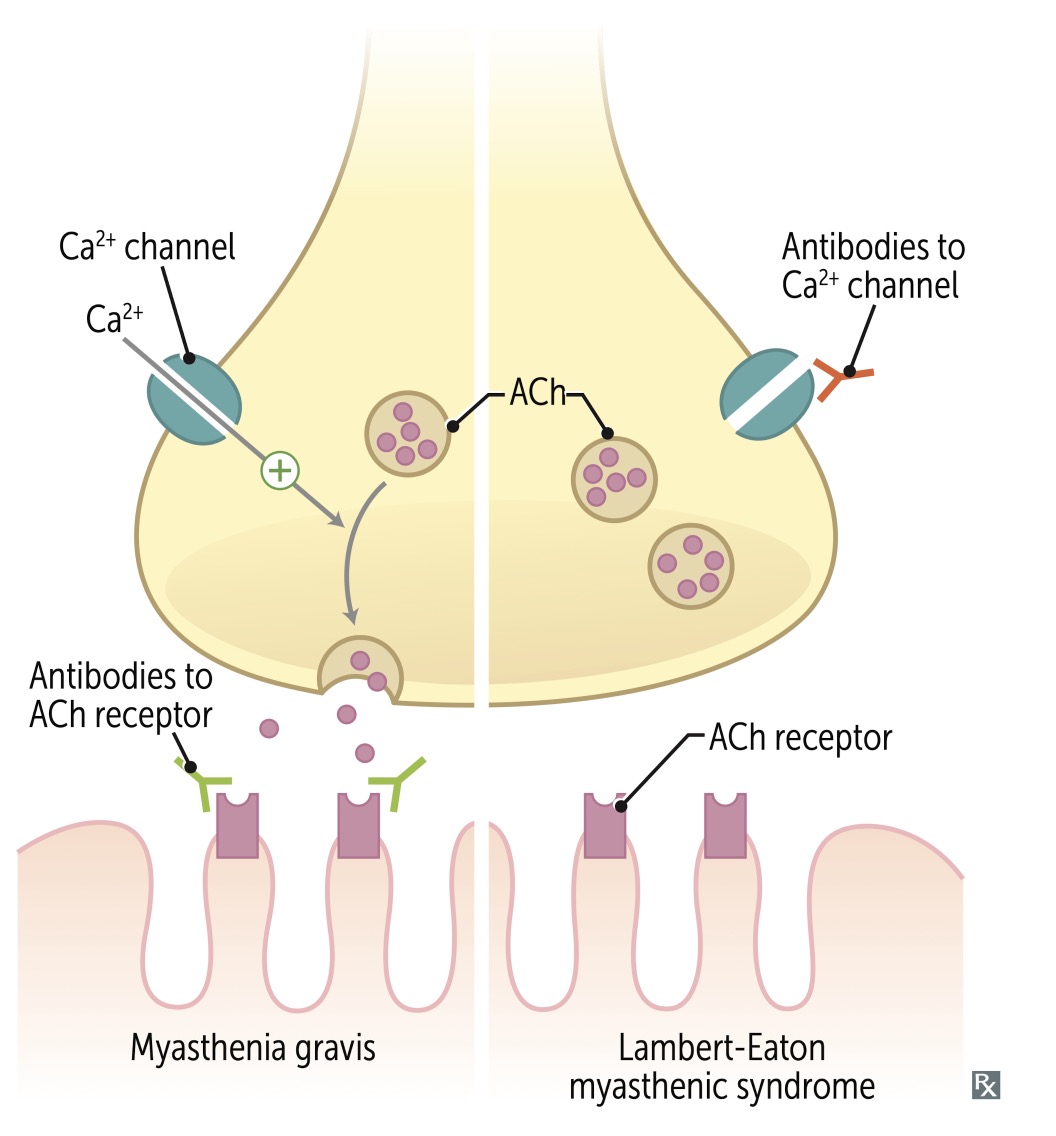 |
Lambert-Eaton Myasthenic Syndrome (LEMS) is a rare disorder that affects neuromuscular junction transmission, primarily manifesting as muscle weakness. This condition is characterized by the presence of antibodies directed against the presynaptic voltage-gated calcium channels (VGCCs) on motoneuron terminals. These antibodies disrupt the normal calcium flux necessary for the release of acetylcholine.
There are two main types of LEMS: paraneoplastic and non-paraneoplastic. Paraneoplastic LEMS is the more common form and is often associated with small cell lung cancer (SCLC). In this type, the expression of functional VGCCs on the surface membrane of SCLC cells, along with numerous other neural antigens, is believed to be responsible for most, if not all, cases. This connection makes LEMS an important paraneoplastic syndrome to consider in patients with suspected or known malignancies. |
In contrast, non-paraneoplastic LEMS occurs without an associated malignancy, and the specific trigger for the development of VGCC antibodies in these cases remains unknown. The clinical presentation of LEMS differs from Myasthenia Gravis (MG) in several ways. Initial limb weakness is more common in LEMS, while extraocular muscle weakness, a hallmark of MG, is less frequently observed.
Treatment for LEMS differs from that of MG. Acetylcholinesterase inhibitors, commonly used in MG, are only marginally effective for LEMS. The primary treatment for LEMS is Amifampridine (3,4-diaminopyridine). Aminopyridines like Amifampridine are beneficial because they block potassium channels, significantly prolonging the depolarization of the presynaptic nerve terminal membrane. This action enhances calcium entry, thereby improving the release of acetylcholine and alleviating muscle weakness.
This table from First Aid compares the characteristics of MG and LEMS:
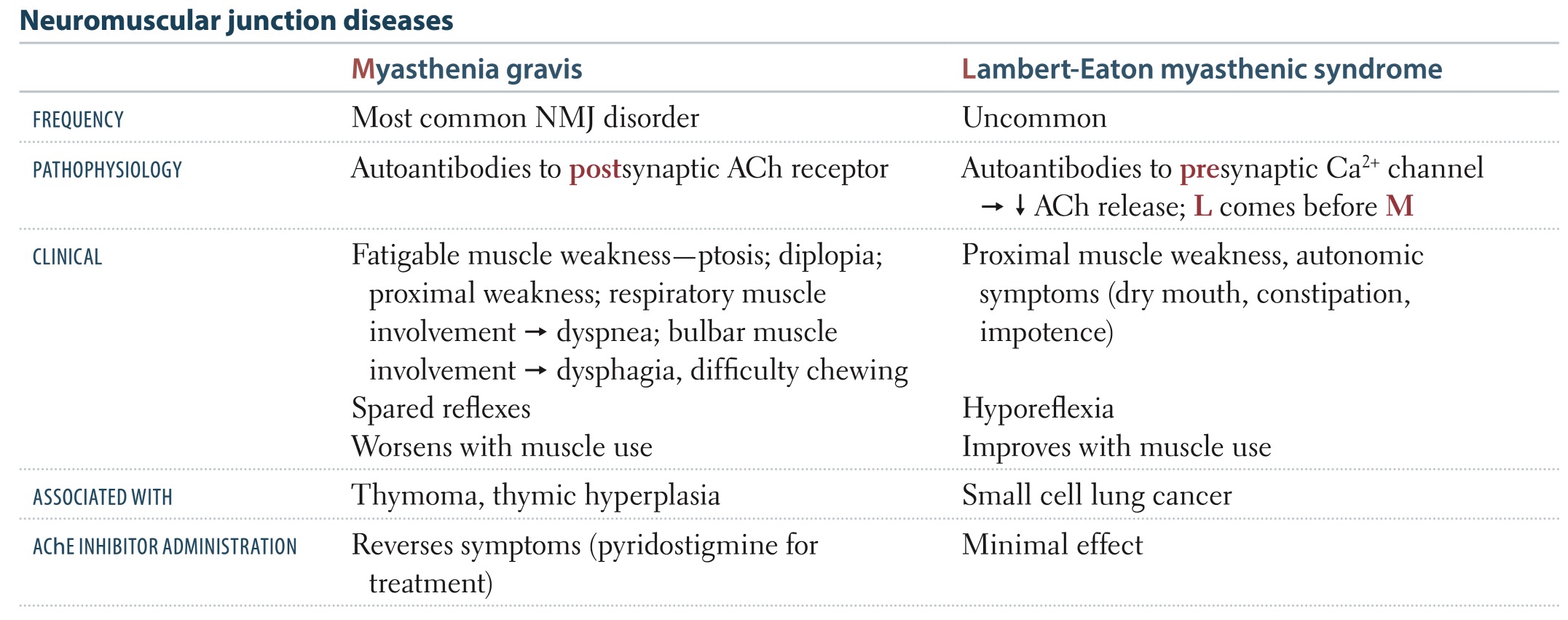
This outline provides a synopsis regarding neuromuscular junction disorders.
Neuromuscular Junction Toxins - Botulism
Organisms of the Clostridium genus, such as C. botulinum, C. baratii, and C. butyricum, are commonly found in soil. These organisms are gram-positive, anaerobic, spore-forming rods that evolved to produce potent neurotoxins. These neurotoxins are responsible for the clinical condition known as botulism, with approximately 200 cases reported annually in the United States.
In 2019, the distribution of botulism cases was as follows: approximately 70% were infant botulism (mainly from consuming contaminated food), 20% were wound botulism, 10% were food-borne botulism, and the remaining 1% were other types.
Botulinum toxin exerts its effects by targeting and cleaving key proteins required for neurotransmitter release at the neuromuscular junction, specifically the SNARE proteins. These proteins mediate vesicle fusion with their target membrane-bound compartments. When the botulinum toxin cleaves SNARE proteins, acetylcholine vesicles are unable to bind to the intracellular cell membrane. This prevents the release of neurotransmitter vesicles.
